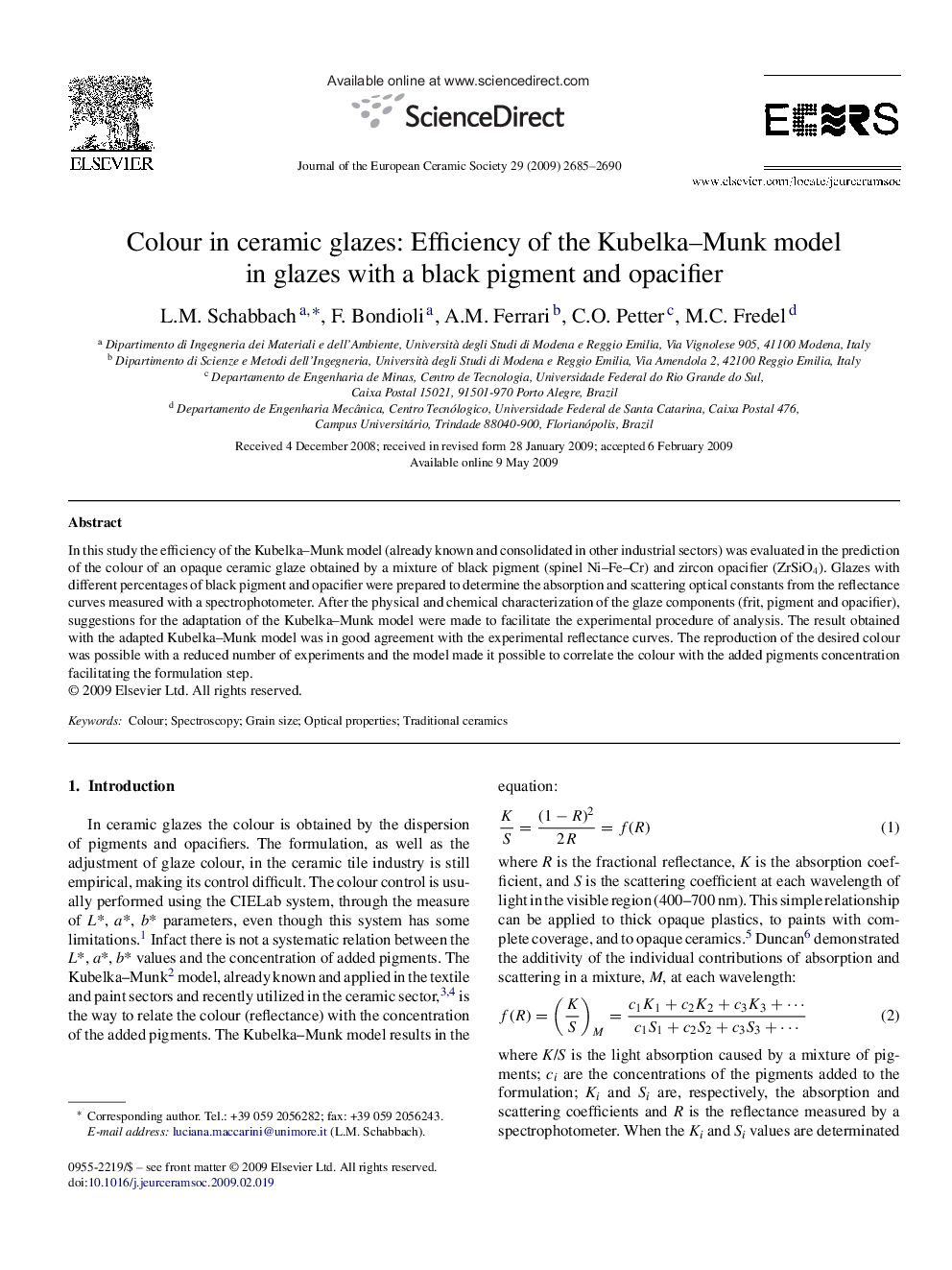| Article ID | Journal | Published Year | Pages | File Type |
|---|---|---|---|---|
| 1477164 | Journal of the European Ceramic Society | 2009 | 6 Pages |
In this study the efficiency of the Kubelka–Munk model (already known and consolidated in other industrial sectors) was evaluated in the prediction of the colour of an opaque ceramic glaze obtained by a mixture of black pigment (spinel Ni–Fe–Cr) and zircon opacifier (ZrSiO4). Glazes with different percentages of black pigment and opacifier were prepared to determine the absorption and scattering optical constants from the reflectance curves measured with a spectrophotometer. After the physical and chemical characterization of the glaze components (frit, pigment and opacifier), suggestions for the adaptation of the Kubelka–Munk model were made to facilitate the experimental procedure of analysis. The result obtained with the adapted Kubelka–Munk model was in good agreement with the experimental reflectance curves. The reproduction of the desired colour was possible with a reduced number of experiments and the model made it possible to correlate the colour with the added pigments concentration facilitating the formulation step.
